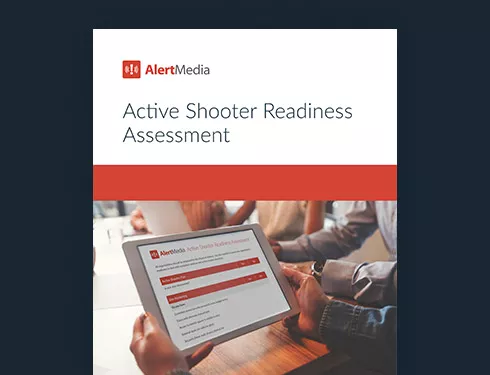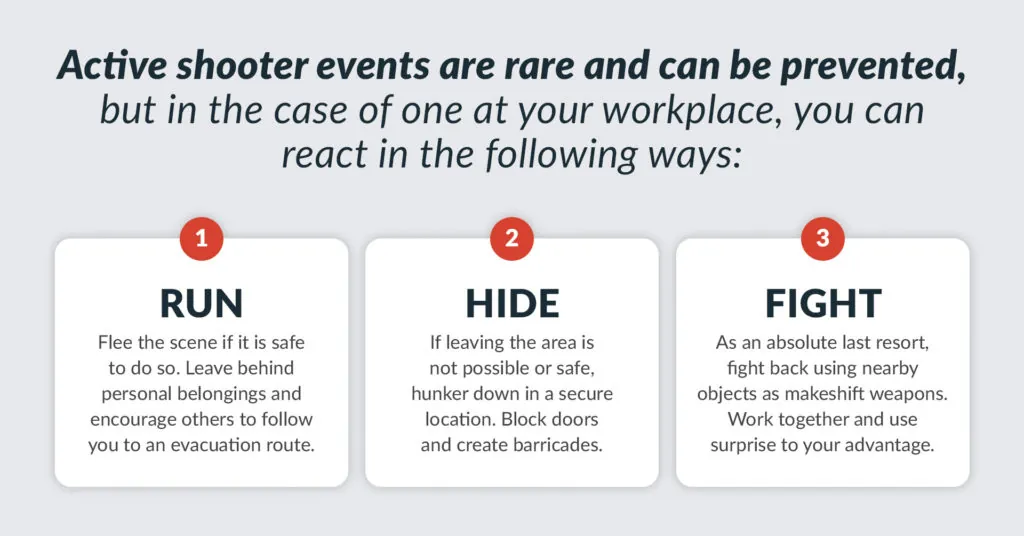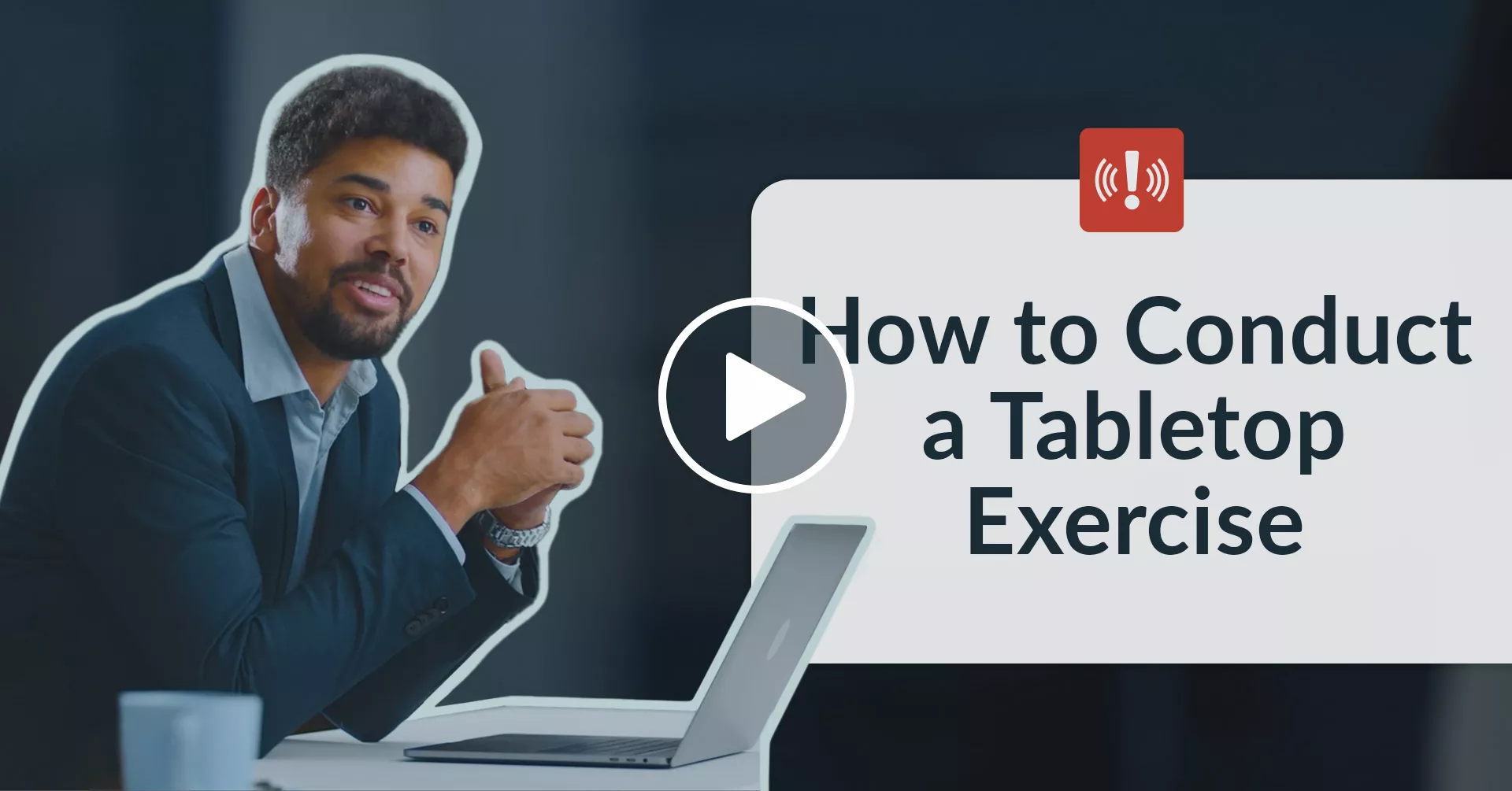
Active Shooter Protocol: Run, Hide, Fight Explained
In an active shooter attack, survival is the top priority. Learn how the “Run, Hide, Fight” method can help protect your people from violence and mitigate the impacts of an increasingly common crime.

When an active shooter begins their rampage, there is usually minimal warning for those in danger. People in harm’s way have only minutes or even seconds to recognize the threat and get themselves to safety. That’s why training and proper active shooter protocols can save lives and protect businesses.
Whataburger, the beloved Texas fast-food chain, has dealt with all kinds of dangers to its employees across hundreds of restaurants in multiple states. In an episode of The Employee Safety Podcast, Whataburger’s Senior Emergency Manager, Ron Derrick, recounts the 2019 El Paso Walmart shooting. Since a Whataburger location shared the parking lot with Walmart, its employees and customers were also in danger.
Thanks to Whataburger’s sophisticated emergency mass notification system, Ron’s team was immediately notified of the mass shooting attack while it was still ongoing. They then quickly alerted the at-risk restaurant and instructed employees to lock down the building and enact their active shooter protocol. They were able to do so all before police arrived at the scene. Whether the necessary response is to run, hide, or fight, timely awareness of an active shooter threat is critical.
Whataburger’s commitment to its customers, communities, and employees means that it has plans and procedures in place for even the most horrific occurrences, which allows it to react and protect people from these tragic events.
No company wants to think about an active shooter incident at their workplace. Still, with the increasing number of active shooter events, companies must have an active shooter response plan and establish employee training for effective active shooter protocols. In this post, we discuss the “Run, Hide, Fight” protocol and what experts recommend doing before, during, and after an active shooter event.
Recent active shooter statistics
Mass shootings have increased significantly in the last 1o years. From 2015 to 2021, these events more than doubled (207% increase), and the rate has remained high, with more than 500 mass shootings in the United States in 2024.
Stressing the importance of workplace active shooter preparedness, the Federal Bureau of Investigation (FBI) also indicates that over 80% of active shooter events occur at a public or private workplace. Despite recent trends toward remote work, most U.S. workers are still going to their jobs in person.
What Does “Run, Hide, Fight” Mean?
The three-step “Run, Hide, Fight” protocol has quickly gained national recognition as one of the most prominent active shooter defense strategies designed to increase people’s chances of survival.
The city of Houston released this training video with funding from the Department of Homeland Security (DHS). The video presents “Run, Hide, Fight” as sequential steps someone should follow when facing an active shooter. It provides viewers with a vivid, comprehensive lesson on how to employ the Run, Hide, Fight process in the simulation of an active shooter scenario.

Run
In an active shooter event, one option experts recommend is to escape from the site as quickly as possible if you hear gunshots and find safety elsewhere. The key benefit of “Run” is removing at-risk individuals from the scene entirely, reducing the total number of potential victims. If you exercise this option and remove yourself from the situation, you should contact police officers when you reach safety to confirm your location.
Hide
If you believe the active shooter might be in your immediate vicinity, a second option is to take cover and hide in a safe or strategic location immediately. Try to pick a bulletproof hiding place with a locked door or that can be barricaded with heavy furniture to prevent anyone from coming in.
Fight
When necessary, a third option is to take action and fight to protect yourself with whatever you have available. Throwing items can be effective in this situation. Use anything at your disposal to counter, disarm, or immobilize the shooter, whether that be a fire extinguisher, heavy object, scissors, or hot coffee.
Why is it not the “Run, Fight, Hide” protocol?
“Run, Hide, Fight” is so-called because that is the correct order in which the steps should take place: First, try to run. If that’s not possible, hide. If that’s also not an option, your last resort is to fight back against the gunman.
This system was developed to save lives, not to stop an active shooter—that’s the job of the police. Fighting an attacker armed with a weapon, especially when you’re likely unarmed, is extremely dangerous. Even as a last resort, fighting is meant to provide an opportunity for people to escape unharmed, not to subdue the attacker fully.
While there have been recorded incidents of heroic intervention by bystanders that effectively stopped an attack, there are far more examples of people who were not able to overcome their attackers and lost their lives trying to do so.
Is the “Run, Hide, Fight” Active Shooter Protocol Effective?
The “Run, Hide, Fight” protocol is widely used for active shooter training and preparedness but not universally recommended. For example, in the U.K., the government advises those in an active shooter scenario (far less common in the U.K. than in the U.S.) to “Run, Hide, Tell.” It refrains from advocating that those in danger fight back against an attacker and, instead, promotes the importance of getting help from the police.
There isn’t much concrete data on which of these approaches is superior, so it’s hard to use numbers to guide policy on how individuals should react to a shooter. One study by Purdue University using computer simulations suggests that running is likely the best action of the three. Still, researchers didn’t offer judgments on how effective “Run, Hide, Fight” is as a framework compared to other forms of training.
There are also concerns that active shooter training is inherently stressful because it forces people to imagine a devastating attack, which might end up causing more harm than good. Ultimately, it’s up to you to determine how best to protect your employees from workplace violence.
How to Prepare for an Active Shooter Event
As important as the “Run, Hide, Fight” procedure is to employee safety, the most effective way to keep your people safe during an active shooter event is by implementing measures to prevent the event completely. That starts with examining the various phases of an event and the steps you can take to mitigate risk during these phases.
BEFORE an active shooter event
1. Create and practice your active shooter response plan
You can use an active shooter response plan to train employees. This planning serves two purposes: 1) to prevent chaos and 2) to be prepared for various types of workplace violence if they were to arise. In scary and traumatic situations, you can save lives by having a plan with strategies and techniques to stay safe. Practice this plan with an active shooter tabletop exercise. You can also regularly conduct active shooter drills with local law enforcement to ensure your employees don’t “freeze” during a real-life active shooter situation.
The benefits of situational awareness training to support active shooter protocols
Situational awareness training complements other active shooter response protocols. It equips employees to recognize potential threats, assess their surroundings, and respond quickly during an active shooter event. By developing a heightened awareness, employees can identify warning signs, understand escape routes, and react decisively under stress.
Situational awareness also reinforces critical response strategies such as the “Run, Hide, Fight” protocol, ensuring employees know how to protect themselves and others in a crisis. Training your employees to stay aware and pay attention enhances preparedness, reduces panic, and increases the likelihood of survival in an active shooter situation.
2. Map and memorize escape routes
Due to the unpredictable nature of active shooter events, your organization should have primary and secondary escape routes that avoid main hallways and open spaces. Knowing these escape routes and the nearest lockable rooms can help your employees reach a safe location as quickly as possible.
3. See something, say something
A safe workplace requires all employees to be aware and involved. If employees feel free to report suspicious activity to an authority figure, leaders can take action, and the workplace is less likely to be caught off guard by an active shooter. A violent actor in your workplace may be a current or former employee or an acquaintance of a current or former employee. Employees may notice characteristics of potentially violent behavior in an employee. Alert your human resources department if you believe an employee or coworker exhibits potentially violent behavior.
4. Conduct first aid training
Along with active shooter training, companies should ensure that some of their employees are first aid certified. Employees can help save lives if they have proper first aid training and knowledge when the unspeakable occurs. Many companies offer first aid training services to other businesses, and it can be as simple as bringing in instructors one afternoon to teach and certify some of your employees. By providing first aid training for employees, you empower them to help ensure public safety during disaster scenarios.
DURING an active shooter event
1. Know when to run
During an active shooter event, “Run, Hide, Fight” training should kick in. If you hear shots fired or see a shooter in the vicinity and you believe escape is possible, you should run to the nearest escape path and help others escape to get as far away from the scene as possible. Encourage others to do the same, but don’t stay behind to help others. Call 9-1-1 only after you are safe.
2. Know when to hide
When escape is not possible, you should find a place to hide from the shooter’s view. Often, you will not have a solid shelter location and need to get out of plain sight. Silence your cell phones and stay completely silent until you receive the all-clear from authorities. Barricade doors to keep out an attacker.
3. Know when to fight
While this option is extremely dangerous, if you are left with no choice or must protect yourself and others, you should attempt to delay the shooter for as long as possible while waiting for the police to arrive and end the situation. Use items around you as improvised weapons or projectiles to disorient and delay the shooter.
Experts recommend fighting as a last resort.
4. Know when and how to help the injured
Once the shooting has stopped, there could be a long time to wait before rescue or help for any wounded people arrives. When first responders arrive, it’s critical to cooperate with the instructions of any police officers and help in any way possible. Administering first aid to your injured persons can save their lives. Everyone in the office must know where the first aid kit is located. You should use pressure dressings, tourniquets, and chest seals on those that need them.
AFTER an active shooter event
The recovery process should begin after an active shooter event has concluded and the shooter is either apprehended by law enforcement, deceased or no longer in the area.
1. Report to a rendezvous location
Your active shooter response plan should include an emergency evacuation plan with a predetermined rendezvous point for employees to gather after the event. This area should be a considerable distance from your worksite, and employees should report there only AFTER they have been informed it is safe. Your organization should use an emergency communication system to keep your people updated as an event unfolds.
2. Cooperate with law enforcement
Chances are, law enforcement and first responders will have questions for everyone affected by the active shooter event. It’s important to answer their questions as thoroughly as possible to ensure their investigation goes smoothly.
3. Seek help to process trauma
Following an active shooter event, employees will feel grief, confusion, and loss. As a company, you are responsible for taking care of all your employees, specifically those most profoundly impacted by the event. Recovering after a disaster takes time and patience. Be sure to provide employees with resources, time, and support. Whether that be financial support for medical bills or trauma counseling, show your employees that you are there for them.
4. Complete an after-action review
It’s saddening that active shooters are such a common threat that “Run, Hide, Fight policies are the norm. Even worse, affected workplaces can’t let up on their efforts after an attack.
There’s no guarantee that a workplace that experienced a violent attack won’t be targeted again in the future. For those organizations, reflecting on the incident with an after-action review is important.
An after-action review is a process through which an organization looks back on a recent event, collects data, identifies what response efforts went well, and reports on improvements for future events. You can ensure a thorough and complete after-action report by involving key stakeholders throughout the business. You might also consider inviting representatives from the police department or other law enforcement agencies to participate in the review.
The Pros and Cons of “Run, Hide, Fight” as Active Shooter Protocol
The controversy surrounding the “Run, Hide, Fight” protocol
While the “Run, Hide, Fight” method seems to be a viable strategy for approaching active shooter scenarios, many critics assert that the method fails to address some unknown variables. Let’s look at the pros and cons of the “Run, Hide, Fight” response and potential alternatives.
Pros: What advocates say
Since at least 66% of active shooter events end before law enforcement arrives, teaching employees response strategies can help save many lives.
The Department of Homeland Security argues that the “Run, Hide, Fight” process is a simple way to train your employees and provide them with a strategy in an active shooter scenario. The three basic steps create a framework people can use easily in stressful situations.
By keeping the process to three simple steps, supporters assert that people can easily remember how to act, even if their mental faculties are impaired due to stress and shock. Additionally, the process applies to a variety of situations and can be easily adapted to match the scenario at hand.
Cons: What critics say

However, there are many complaints about this training method. One of the critics’ main concerns is the process’s failure to address the “freeze” that typically paralyzes people and inhibits their brains during shocking situations. Many psychologists and behavioral scientists argue that most people cannot decide whether the best course of action is running, hiding, or fighting in active shooter scenarios. There will be a delay in our actions that can render this method obsolete.
Many experts also complain that the process is based on linear, sequential thinking. A person is not supposed to consider fighting until they have deemed running and hiding impossible, which is not necessarily the best strategy in a dynamic, active shooter scenario where conditions change every second. The process has also been interpreted to cover options—rather than sequential steps. Thus, it can be adapted to encourage non-linear strategies to ensure we do not ignore potentially superior strategies.
Some critics also believe the “Run, Hide, Fight” active shooter response strategy encourages individuals to act as heroes and become martyrs. The U.K. government promotes the slogan “Run, Hide, Tell,” driven by the belief that it will avoid such motivations. Including the “fight” option teaches people to be brave if they cannot successfully run or hide. Conversely, the process can also encourage a victim mindset. Since run and hide are two of the three options, the model fosters a nonaggressive mindset that could leave people unprepared to fight.
What Should Your Organization Do?
One of the most significant downsides to the “Run, Hide, Fight” model is the individualistic focus of the response process. During an active shooter scenario, there should be people with different responsibilities to ensure the maximum number of people make it to safety. Those who can escape the situation must immediately call 911 and alert the authorities to get help for those still in the building.
Similarly, at least one person must oversee a mass communication system to keep employees updated as an event unfolds. Adopt a multi-channel, two-way emergency notification system to keep track of all your employees and relay crucial information in stressful scenarios.
An effective emergency communication system must meet the following criteria:
- Intuitive interface: Send out alerts with ease
- Two-way messaging: Allow users to reply with status updates
- Wellness checks: Quickly survey employees to see if they’re safe or need assistance
- Communication templates: Use pre-made templates for different emergency scenarios
- Centralized Information: Create event pages to provide one source for all information
- Availability: Access via a mobile device—an incident can occur at any time
Since an individual’s response to a threat varies depending on its location, companies can use a threat monitoring tool to gain valuable information about the shooting. A comprehensive threat monitoring system can provide real-time updates on unfolding events and help you understand a threat’s proximity to your people.
Alternatives to the “Run, Hide, Fight” Active Shooter Response
Due to the many critiques of the process, alternative approaches have emerged that attempt to remedy the shortcomings of the “Run, Hide, Fight” approach.
Move! Escape or attack
While this method follows very similar steps, proponents argue that verbiage can completely alter the message and meaning behind a process. By using the word “move,” the person is forced to think about where to move and how to do it, whereas “run” creates a sense of panic and frenzy—which can be detrimental in active shooter scenarios. Similarly, the word “escape” instead of “hide” forces the person to think about escaping strategically. This may involve hiding and running for cover when the opportunity arises instead of staying put like a sitting duck. Giving the person more flexibility within the options makes it less likely they will get stuck in linear thinking. Lastly, “attack” is offensive, while “fight” is defensive. Using an offensive verb empowers the person to be more confident in their actions.
Identify, assess, prevent
This method deals more heavily with threat assessment and prevention than actual steps to take during an active shooter scenario. The first step is to “identify,” which involves training employees to recognize the behavior of potential threats. Provide your employees with the tools to report these threats and create a team to fulfill the next part of the process: “assess.” A threat assessment team within your company should evaluate every threat seriously and equally to create a plan of action to “prevent” disaster scenarios from unfolding.
Training people to use their intuition and instincts
Rather than following a three-step process, many experts urge companies to train their employees to use their intuition and instincts in stressful scenarios. Supporters of this strategy recognize that every situation will be different. A sequential process often hinders people from thoroughly evaluating the scenario and taking the best action. Go through potential situations you might encounter during an active shooter scenario and develop plans of action that will work specifically for your workplace and personnel.
Hope for the Best, Prepare for the Worst
Providing employees with comprehensive training on active shooter protocols is critical to overall preparedness and protecting your people from imminent danger. While no active shooter response technique is perfect, “Run, Hide, Fight” is a helpful framework that anyone should know if faced with surviving an active shooter scenario.
While these violent attacks are relatively rare, the risk is clearly increasing over time. Safety leaders should also consider training employees on several techniques or adopting a hybrid approach based on the principles introduced by the “Run, Hide, Fight” protocol.





